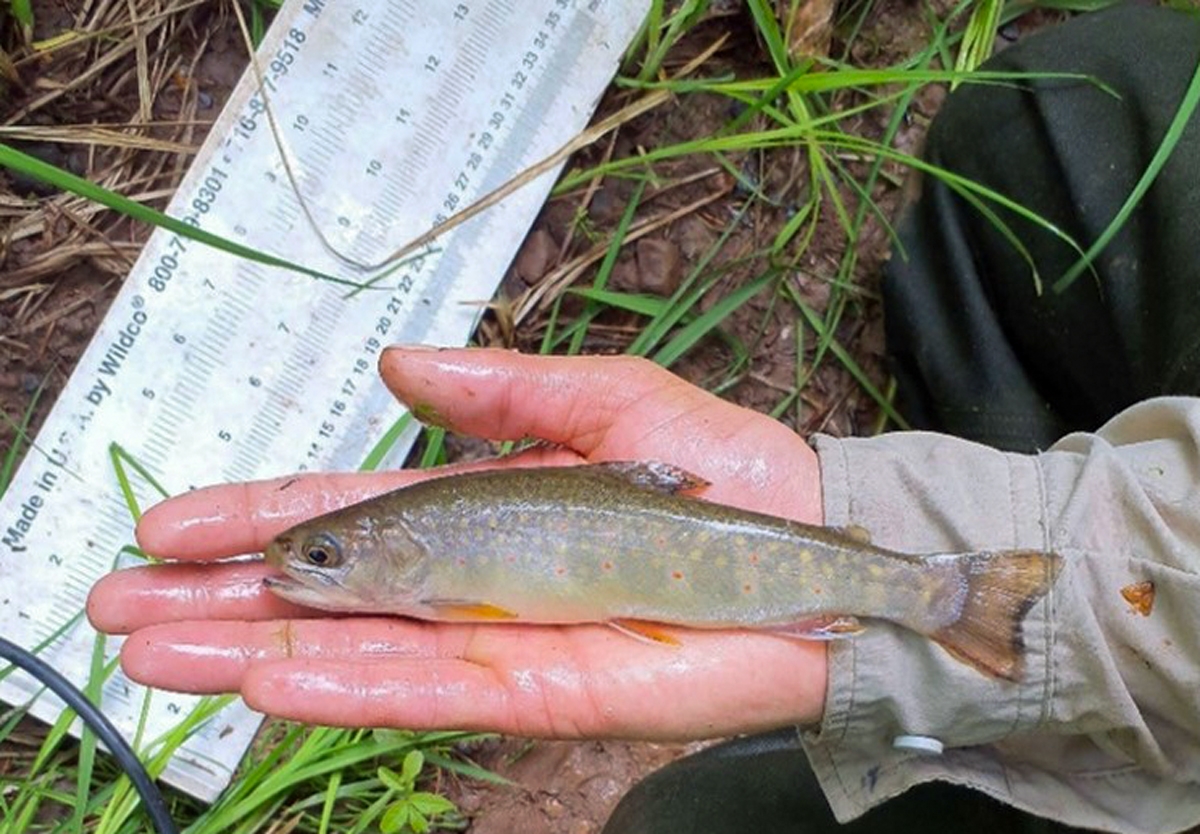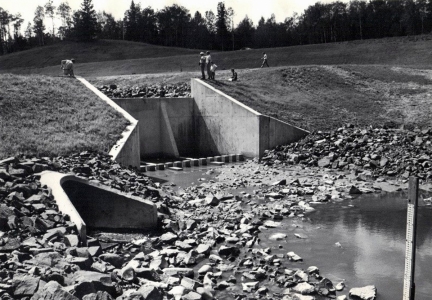
MPCA works with multiple agencies to restore Skunk and Elim creeks
Trout are once again finding a home in two small coldwater streams in northeast Minnesota after water quality conservation work in the Nemadji River Watershed.
Watershed studies completed by the MPCA during the past two decades have shown that Skunk and Elim creeks in Carlton County are degraded by excess sediment, the result of historical logging and other human activities that altered stormwater runoff and stream flows. The creeks drain water from thousands of acres of forest, rangeland, and rural residential land west of the Nemadji River, a main tributary to western Lake Superior.
“This area is prone to erosion and sediment issues, just from the nature of its red-clay soils,” said Lindsey Krumrie, MPCA project manager. “You can easily see the reddish color of the water flowing into Lake Superior after a big rain event.”

Scientists have also observed poor aquatic habitat and barriers that limit the movement of fish in these creeks. Several red-clay dams built in the 1970s prevented fish passage and contributed to excess sediment when they failed.
Skunk Creek is included on Minnesota’s impaired waters list because of “turbidity,” or cloudy water. Elim Creek has been designated impaired because it doesn’t meet the biological criteria for a healthy fish community. However, after several restoration efforts during the past decade, the creeks are showing signs of improvement.
Building on past progress
The MPCA and other state and local agencies have been collecting data on the creeks since 2009. In 2011, the Minnesota Clean Water Fund and U.S. Fish and Wildlife Service’s National Fish Passage Program supported the removal of three red-clay dams on Elim Creek and restored a small segment of the stream. Before the start of the project, one dam had failed, releasing 300 tons of sediment, and two other dams appeared likely to follow. The restoration included a natural channel design, native plantings, and livestock fencing.
In 2018, Carlton County’s Soil and Water Conservation District and the county’s transportation department addressed erosion, road stability, and fish passage on Skunk Creek by initiating the Skunk Creek sediment reduction project. A combined effort funded the removal of a dam and culvert and stabilized eroding banks.

In 2020, a grant from the U.S. Environmental Protection Agency supported the development of a 10-year plan to address remaining issues in the watershed. County agencies completed the first project in 2022 with the installation of a sediment control structure to prevent gravel from washing into Skunk Creek. Other proposed projects identified in the plan include culvert replacements and stream bank stabilizations. Several of these projects are in the design phase or shovel-ready stages. Also, a dam removal feasibility study to address the future of Elim Dam, another barrier on Elim Creek, is underway. Additional efforts will increase water storage on the landscape, implement agricultural best management practices, and bring more native plants to the area.
Promising results
When the MPCA added Skunk Creek to the impaired waters list in 2014, 2,400 tons of sediment were flowing into the creek each year. Runoff was up to 10 times greater during extreme rain events causing road, culvert, and streambank failures. Projects have since reduced sediment loads by 224 tons and prevented more than 17,000 tons of sediment from entering the creeks.
The projects helped bring fish back to the creeks, too. Previously, MPCA researchers found few fish species in Elim Creek and upstream of the barrier in Skunk Creek, and both locations showed no sign of trout. Following restoration work, a re-sampling discovered the presence of trout as well as a three-fold increase in total fish and fish species. Biologists sampled nine adult brook trout and brown trout as well as a juvenile brown trout in Elim Creek, indicating that species may already be spawning and rearing there.
“This project stabilized a vulnerable section of stream and opened up seven miles of coldwater habitat,” said Jenny Jasperson, MPCA watershed scientist. “We plan to continue monitoring in this watershed over the next several years as more implementation work is rolled out.”
Success timeline
The restoration efforts at Skunk and Elim creeks were possible through a collaborative network of partnerships, willing participation of landowners, and the committed leadership of Carlton County agencies. Funding, planning, and implementation for these projects came from federal, state, and local sources. The implementation cost for all three projects was just under $520,000.